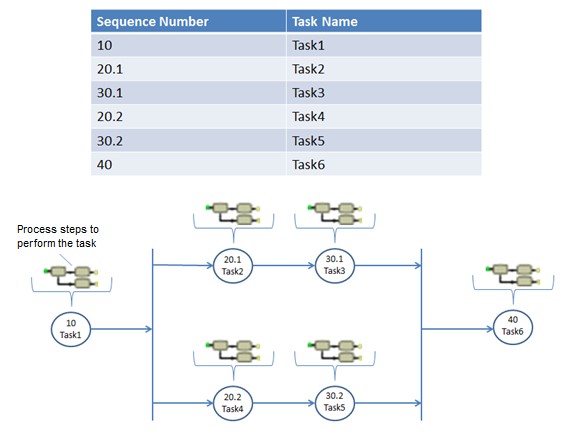As Simio continues with the Forward Thinking attitude, we are excited to bring you the latest release. This page will highlight the newest features and enhancements that will continue to show you why Simio is the leader in simulation and scheduling technology.
Be on the lookout for Simio Portal Edition coming out in the near future!
In the latest release, we have added Task Sequence Element and StartTasks Step, enhanced the server with the addition of process type and sequence option and a new SimBit. In the Enterprise Edition, we have also added Data Table UI, API Support for Output Tables and States within Tables. All of these additions are discussed in detail below. Also, with Simio’s commitment to providing you with the best user experience, we enhance the execution speed and start time options.
The Task Sequence element is used to define and execute structured sequences of processing tasks. It will help when modeling a set of related tasks which may have parallel and/or serial processing constraints. A StartTasks step references a Task Sequence element and is used to start a task sequence that is associated with an object in the system.
Process flows controlled by a Task Sequence element can include serial (one task following another) or parallel (concurrent) processing strategies, as well as conditional or probabilistic branching. When a task is started, you define the action(s) required to perform the task by specifying the name of a process to be executed. A task is considered finished once the original token executing the invoked process has ended.
The following illustrates an example workflow that consists of a collection of tasks which must be processed in a specific order.


The Standard Library’s Server object has been enhanced to include the new Process Type property. The options with the Process Type property include:
For a Process Type specified as ‘Task Sequence’, the Server object will allow you to model the processing of a set of individual tasks, each using one of the following general process types:
We have added a new SimBit to our library of small examples to illustrate the new features of the Server Task Sequence options.
ServerUsingTaskSequence.spfx - This project includes three separate models that demonstrate the various ways of using the task sequence features to execute a series of tasks from within a Server object.
New controls have been added to data tables that allow you to move state columns left and right to get them in the exact order that is most convenient.
We have added the support for having access to the output table state data through the API. The StateRows property of the ITable interface was added to allow reading of table state values. See the API Reference Guide for more details.
We have added the Visible property to the States columns within both Data Tables and Output Tables. Within the Data Tables, standard type columns have had a property named Visible that allows an Enterprise edition user to determine whether the column is visible to the Scheduler within the Operational Planning mode (both in the Tables and Gantt right side area). This Visible option is now available as well with any state type columns that are specified either within a Data Table or Output Table.
We have changed our architecture to support a new type of step-level optimization. We used those new tools to improve the execution speed of seizing. Multiple relational data tables will now import much more quickly in certain cases. Parent tables are now automatically imported before child tables, avoiding error handling that would slow the import.
We have enhanced the Starting Time portion of the Run Setup within the Run ribbon. This starting time previously required a particular date and time to start the simulation run. The property name has now changed to Starting Type and allows for ‘Specific Starting Time’, which is the default and only previous behavior. It also has the option to ‘At start of run, use the current *’ where the user can specify current day, week, month, etc. This is particularly useful in applications like planning and scheduling, where you want to make a series of runs all for the current day or week for example.